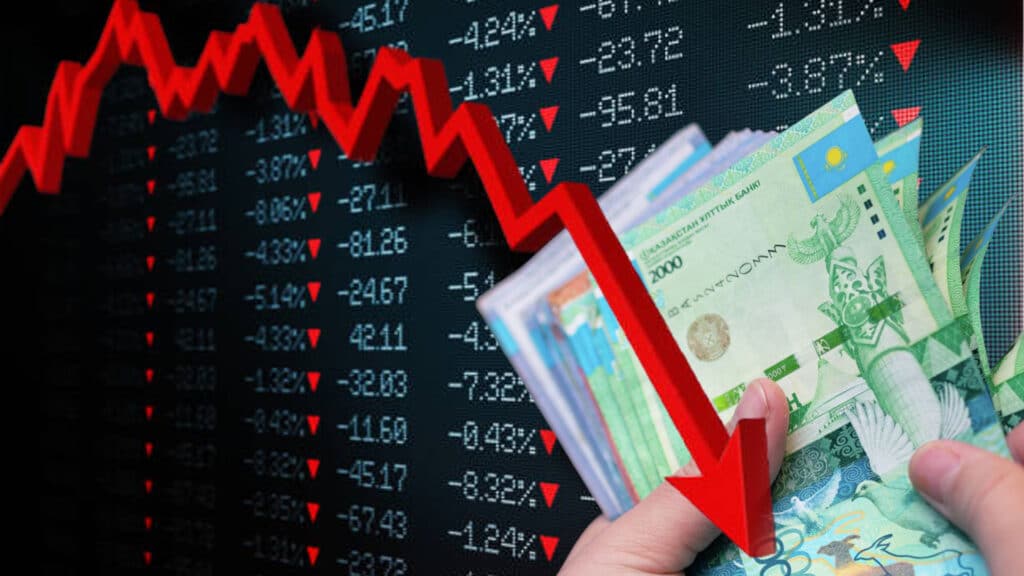Multiple crises loom for Kazakhstan’s economy between 2025 and 2026

Between 2025 and 2026, Kazakhstan will face three simultaneous economic crises — budget, debt and balance of payments crises — according to Kairbek Arystanbekov, head of the Institute for Economic Policy, in an interview with Golos Naroda, a YouTube channel. The expert stressed the severity of this «triple crisis» scenario, warning that the combination of these downturns will significantly impact the economy.
Arystanbekov highlighted the potential budget crisis, citing a projected deficit of $8.4 billion by 2025. As of Aug. 1, 2024, the budget deficit already stood at $5.7 billion and estimates from the Applied Economics Research Centre (AERC) indicate the deficit could reach $13.8 billion by the end of 2024.
The balance of payments deficit, caused by an excess of imports over exports, is expected to increase by $5 billion to $6 billion by 2025, worsening the current account deficit, which was $9 billion in 2023.
Moreover, the period between 2025 and 2026 will mark the peak of debt repayment for private companies, amounting to $101 billion. This significant repayment will likely result in substantial capital outflows from the country, the economist added.
Arystanbekov also called for the tenge devaluation to 600 per U.S. dollar to mitigate these challenges. He argued that maintaining the current exchange rate would cause the country to lose competitiveness, particularly as non-resource exports have already declined by $15 billion by the end of 2023, despite the government’s efforts to provide support.
«We could maintain the current exchange rate, but we are losing price competitiveness. A gradual devaluation, implemented in stages throughout the year, is required, yet the National Bank refuses to take this step. The exchange rate has not risen enough since the beginning of the year,» said Arystanbekov.
Over the past five years, cumulative inflation in Kazakhstan has reached 55% to 60%, while the exchange rate has increased by only 23.8%, rising from KZT385.77 per dollar at the end of the third quarter (Q3) of 2019 to KZT477.65 in Q3 2024.
«If we proceed with gradual devaluation, we will restore our economy’s competitiveness — leading to improved employment and tax revenues. Once this is accomplished, we will also see improvements in foreign trade indicators, such as the balance of payments deficit. If the situation remains unchanged, we risk depleting our foreign currency reserves, making a correction crucial. The National Bank and the government must be held accountable to fight inflation effectively, every day, every quarter and every year,» Arystanbekov concluded.
As of Sept. 1, the national budget faced a $3.2 billion revenue shortfall, primarily due to lower-than-expected tax collections. The budget was expected to receive $28.2 billion by August, but the actual figure reached only $25 billion. Expenditures amounted to $30.2 billion, leading to a budget deficit of more than $5.7 billion, exceeding the planned $4.3 billion. To cover this gap, the government withdrew $8 billion from the National Fund by Oct. 1, bringing the total expected withdrawals to $11.5 billion.
Economic growth for the first seven months of 2024 made up 3.5% year-on-year. The National Bank has projected that the country’s economy will expand by 5% to 6% by year-end, while President Kassym-Jomart Tokayev has set a target of 6% growth. However, S&P Global Ratings analysts have cautioned that reaching this target may be difficult.
In late August, the government adopted an updated socio-economic development forecast for 2024-2025. Under the base scenario, Kazakhstan’s GDP is expected to grow by 5.6% in 2025 and 5.4% in 2026.

